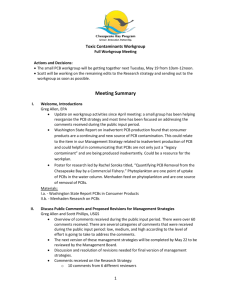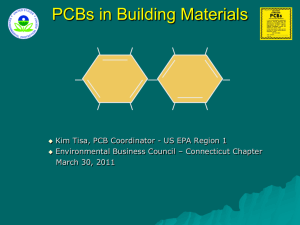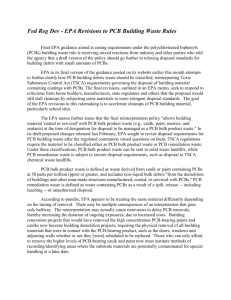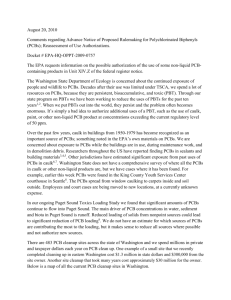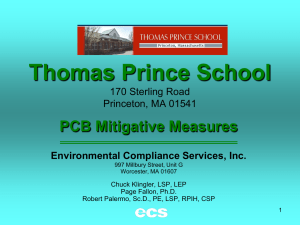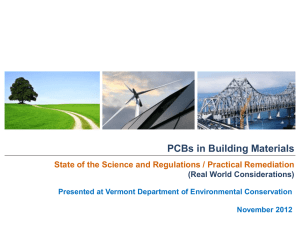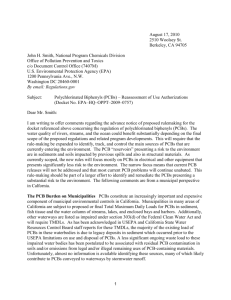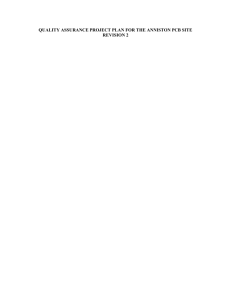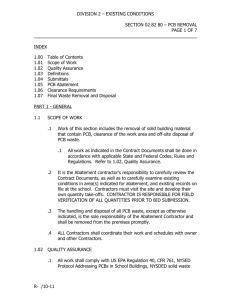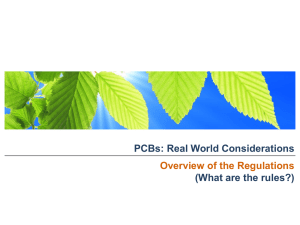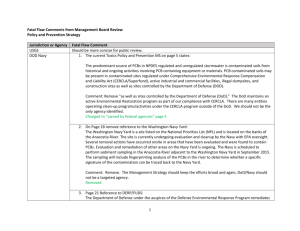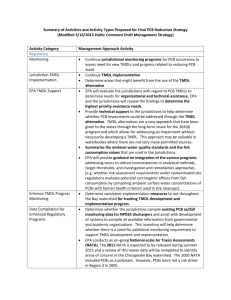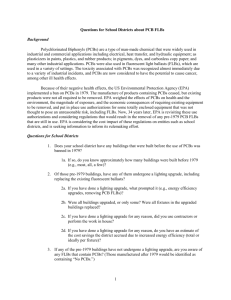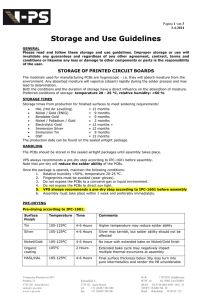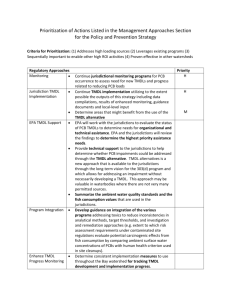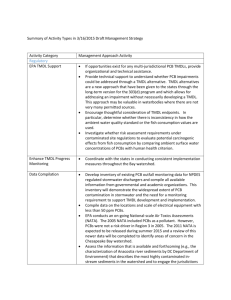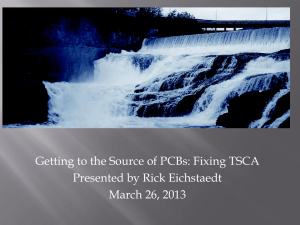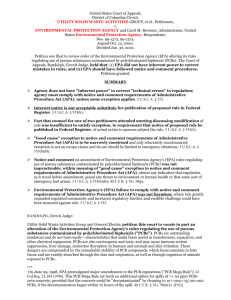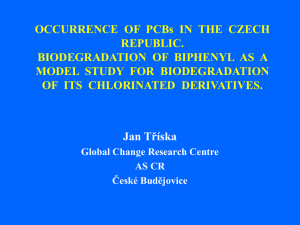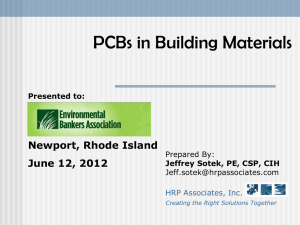U.S. EPA Staff Perspective on Polychlorinated Biphenyls (PCBs
advertisement
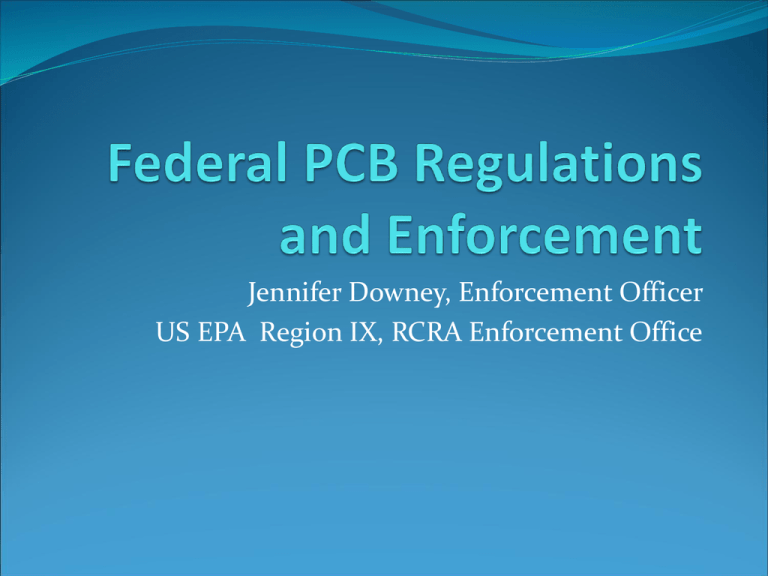
Jennifer Downey, Enforcement Officer US EPA Region IX, RCRA Enforcement Office How are PCBs regulated at a federal level? Toxic Substances Control Act (TSCA) Section 6(e) of TSCA states that no one may manufacture, process, distribute into commerce, or use PCBs 50 ppm in any manner other than a totally enclosed manner unless authorized by the EPA Administrator. TSCA isn’t delegated to the states. EPA is responsible for all PCB inspections and enforcement. DTSC regulates PCBs as a hazardous waste (Greater than 2 ppm) Sources of PCBs (pre 1978) Historical releases. Electrical Equipment – sometimes you can tell by the name of the equipment, but many tags have been removed Paint – difficult to tell without sampling Caulk – difficult to tell without sampling Ballast – newer ballast will clearly state that it has no PCBs. Wiring – difficult to tell without sampling Gaskets – difficult to tell without sampling Electrical Equipment Transformer Capacitor Ballast Key regulations Legal uses of PCBs – must be enclosed with no leaks. PCB transformers must be labeled (over 500 ppm) and/or registered. When PCBs are “taken out of service”, they must be properly disposed (or decontaminated) within a year. Storage requirements – for over 30 days. Equipment Labels How to legally dispose of PCBs? Incinerate PCBs (none in pacific southwest) Landfill (Kettleman City, CA and Beatty, NV) High efficiency boiler (none in pacific southwest) Scrap metal recovery ovens and smelters (none in pacific southwest) Decontamination of PCBs EPA PCB Inspections Inspect facilities that store, treat, or dispose PCBs (“PCB approved facilities”) Follow-up on complaints Sources of complaints Exception reports from PCB approved facilities Public and NGOs State or other parts of EPA Areas of PCB Enforcement Focus PCB approved facilities Ships Follow-up on complaints Identifying potential companies with large sources of PCBs Recent Cases 1) Earth Protection Services, Inc. - 11/30/2001 - $2,500 2) Exxon Mobil - 08/21/2008 - $2.64 million 3) Global Shipping LLC and Global Marketing Systems, Inc. - 01/29/2009 - $518,500 4) US Ecology (Beatty, Nevada )09/30/2010 - $497,982 (RCRA/TSCA) 5) Chemical Waste Management (Kettleman City) 11/29/2010 - $302,100 What we need from you! Information on potential PCB sources Location Levels (Sampling is key) Type of material (soil, equipment, paint, oil) Does it appear to be a legacy issue or an ongoing issue Do you know who is responsible for the source of PCBs Hypothetical #1 Leaking Transformer and sampling of oil finds level at 400 ppm. Identify owner land and transformer Information on the transformer. Does it have a PCB label or other labeling? Photograph transformer and surrounding area. Interview owner or employees to determine length of spill. Immediately call EPA. Hypothetical # 2 Building paint is sampled and found to have 600 ppm Identify owner What is color of the paint? Are there a variety of colors on the building? Photograph building Interview employees and owner as to knowledge Call or refer to EPA. Hypothetical # 3 Soil sampling finds PCB at 48 ppm Is the source above 50 ppm? Electrical equipment in use? Historical use of land? Can’t determine source? – If we can’t determine if source is above 50 ppm we will refer it to DTSC. Audience Hypothetical? Questions Hopefully answers! How to Contact US EPA PCB Tips go to: Christopher Rollins, RCRA Enforcement Office, US EPA Region IX Address: 75 Hawthorne Street, San Francisco, CA 94105 Phone: (415) 947-4166 Email: rollins.christopher@epa.gov Technical Issues on Sampling or Corrective action – santos.carmen@epa.gov or rollins.christopher@epa.gov
